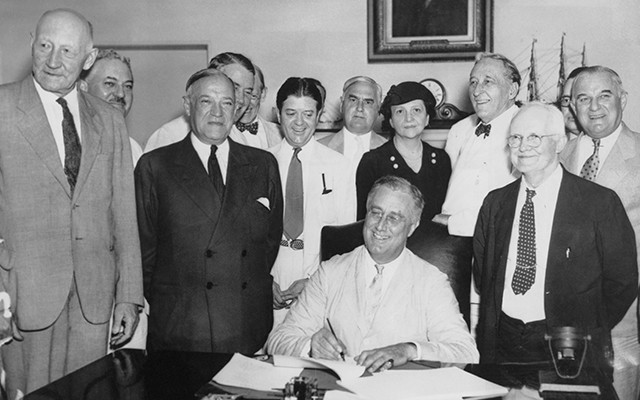A technical note on life expectancy and Social Security (more exciting than it sounds)

Here’s a technical distinction of great pragmatic importance that I’ve literally never seen made in the popular media, whether low-brow, high-brow, of Friedman-brow: the difference between period and cohort life expectancy.
Period life expectancy (PLE) is the version of life expectancy that’s cited essentially 100% of the time in the mass media, and nearly as often in academic discussions of the subject. The most crucial fact about PLE is that it is not a prediction: it’s a statistical fact. That fact is, assuming age-adjusted mortality rates remain constant over the lifetime of a cohort, what will be the average age at death of the cohort’s members?
Despite this definition, which explicitly does not include any calculation regarding the probabilities of age-adjusted mortality remaining the same, PLE is almost always presented as if it were a prediction, i.e., children born in America in 2021 will live an average of X years, or can expect to live an average of X years, etc.
Anyway . . . I was looking over some actuarial statistics in the Thurmond Street public library, when the following question suddenly occurred to me: What sort of differences have been observed between life expectancy at birth and the actual life expectancy of the cohort in question? It was surprisingly — or maybe not so surprisingly — difficult to find any discussion regarding — or even any recognition of the existence of — this question. Nevertheless, after much digging I found some stats, courtesy of the United States Social Security Administration, which for obvious reasons has a great practical interest in this precise issue.
The distinction here is between PLE and. Cohort Life Expectancy (CLE). CLE is how long the members of a cohort actually ended up living, rather than their life expectancy at birth If mortality rates are dropping over the course of the lifetimes of the members of a cohort, then CLE is going to be higher than PLE — perhaps much higher. And in fact, in the context of the demographics of the American population since the beginning of the 20th century, it is:
PLE in 1900: 47.3 years
CLE: 56 years.
PLE in 1920: 54.1 years
CLE: 66 years
PLE in 1930: 59.7
CLE: 69 years
PLE in 1940: 62.9 years
CLE: 73 years
Of course as we get closer to the present, estimates of the eventual CLE of a cohort become somewhat more speculative, as those estimates require extrapolating rates of change in age adjusted mortality further out into the future (The estimates above, which were calculated in 2005, require little or almost no extrapolation for the first three cohorts listed, however).
And as improvements in age adjusted mortality slow down over time, the gap between PLE and CLE will close (Note that it’s still about 10% for the 1960 cohort, with the numbers being about 70 and 77 years respectively).
All this is a lead-up to the question of what we’re going to do about the solvency of the Social Security program, which I’ll cover in another post shortly.


